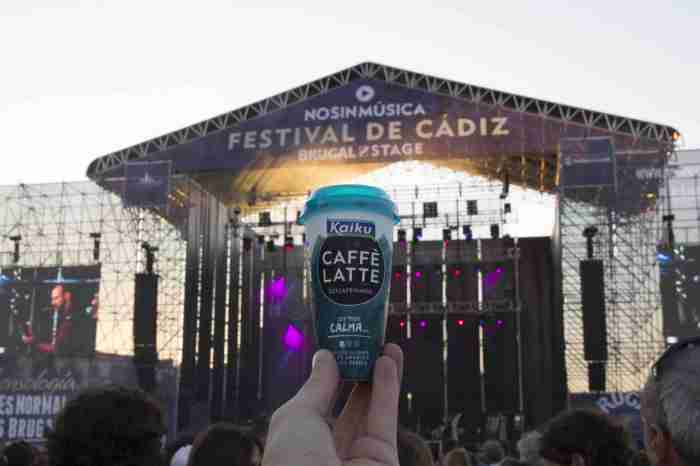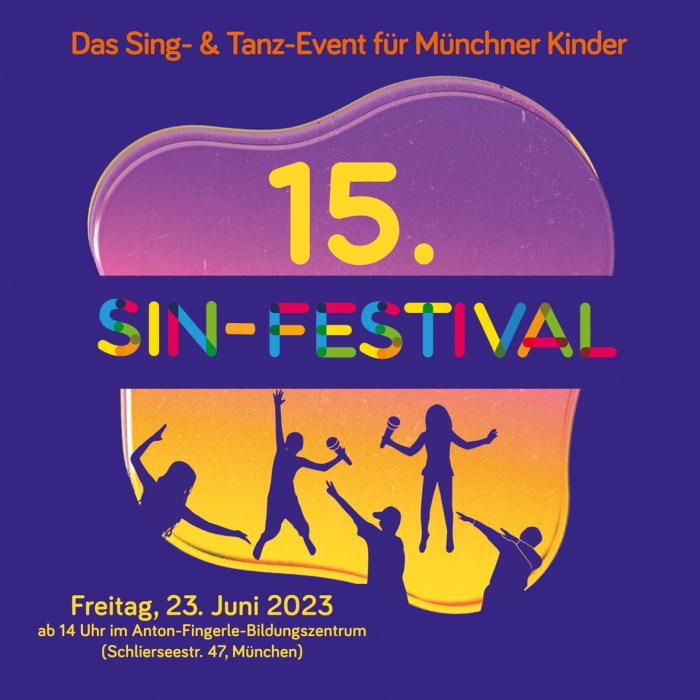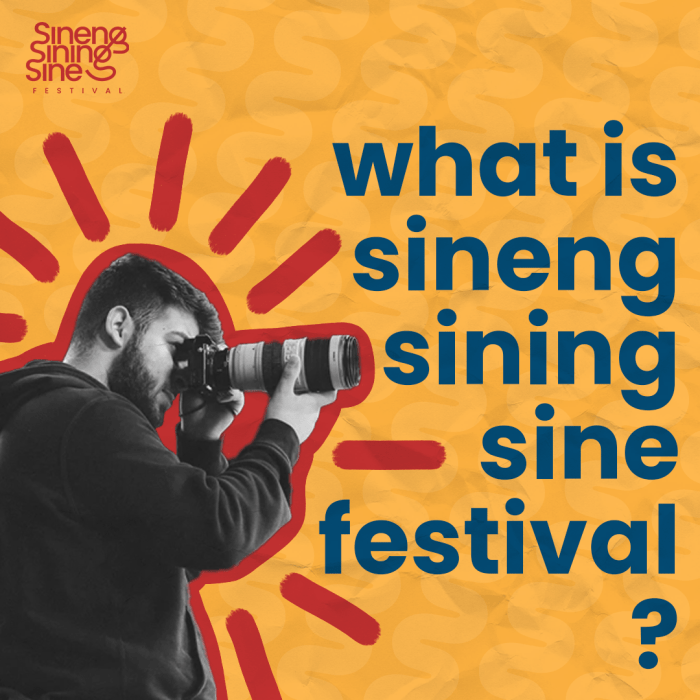Sin Festival: From ancient bacchanalia to modern-day revelry, humanity has always found ways to celebrate transgression. This exploration delves into the historical context of festivals dedicated to indulgence, examining their evolution across cultures and the complex social and psychological forces that drive them. We’ll uncover the rituals, the motivations, and the enduring appeal of these events, tracing their journey from religious ceremonies to contemporary cultural phenomena.
Prepare to uncover the fascinating, and often surprising, history behind our collective desire to let loose.
We’ll dissect the psychological underpinnings of participation, analyzing the interplay of conformity, rebellion, and community bonding. The ethical considerations of celebrating transgression will also be addressed, exploring the potential for both positive and negative consequences. This isn’t just a historical account; it’s a deep dive into the human condition, examining our inherent need to push boundaries and explore the shades of grey in our moral compasses.
Get ready for a thought-provoking journey.
Historical Context of “Sin Festival” Celebrations

The concept of a “Sin Festival,” a period of sanctioned indulgence and transgression, isn’t a monolithic entity but rather a recurring theme across diverse cultures and historical periods. These festivals, while varying significantly in their specifics, share a common thread: the temporary suspension of societal norms and the deliberate embracing of activities typically considered taboo. Understanding their evolution reveals fascinating insights into human behavior, social structures, and the complex relationship between religion and secular life.
Evolution of Indulgence and Transgression Festivals
The roots of “Sin Festivals” can be traced back to ancient agricultural societies. Many early festivals were linked to the agricultural cycle, particularly the harvest. These celebrations often involved feasting, drinking, and ritualistic acts intended to ensure a bountiful next season. Over time, these rituals incorporated elements of social inversion, where established hierarchies were temporarily overturned, allowing for a release of pent-up frustrations and societal tensions.
This inversion wasn’t merely chaotic; it served a vital social function, acting as a safety valve preventing larger-scale social unrest. The gradual evolution saw these celebrations increasingly incorporating elements of excess and transgression, shifting from purely agricultural celebrations to events incorporating aspects of carnivalesque revelry.
Religious and Secular Aspects of Historical “Sin Festivals”
The interplay between religious and secular aspects is a key characteristic of historical “Sin Festivals.” Some festivals, like the Roman Saturnalia, possessed strong religious underpinnings, honoring specific deities and incorporating rituals linked to their mythology. However, even in these religiously rooted celebrations, the secular aspects of feasting, revelry, and social inversion were prominent. Conversely, many secular festivals, particularly those associated with carnivals or pre-Lenten celebrations, gradually absorbed religious elements over time, creating a blend of sacred and profane elements.
This blending often resulted in festivals with a unique dynamism, where religious symbolism intersected with expressions of popular culture and social commentary. The line between the sacred and the profane frequently blurred, making the festivals complex cultural phenomena.
Social and Political Functions of “Sin Festivals”
“Sin Festivals” served a variety of crucial social and political functions. As mentioned earlier, they acted as a vital safety valve, providing a controlled outlet for societal tensions and frustrations. The temporary suspension of social norms allowed for a release of pent-up aggression and anxieties, potentially preventing more disruptive forms of social upheaval. Furthermore, these festivals often served as important social bonding events, strengthening community ties through shared experiences.
In some cases, they even played a role in political processes, allowing for temporary challenges to authority and providing a platform for social commentary, albeit often veiled in ritual and symbolism. The ability of these festivals to serve multiple functions simultaneously demonstrates their significance within their respective societies.
Rituals and Traditions of Historical “Sin Festivals”
The rituals and traditions associated with “Sin Festivals” varied widely across cultures and time periods. However, common themes emerged, including feasting, drinking, masking, and the temporary inversion of social hierarchies.
| Culture | Rituals | Social Function | Time Period |
|---|---|---|---|
| Ancient Rome (Saturnalia) | Feasting, gift-giving, role reversal (slaves served by masters), public revelry, gambling | Social cohesion, release of tensions, honoring the god Saturn | Late December |
| Medieval Europe (Carnival) | Parades, masquerades, feasting, drinking, public mockery of authority, temporary suspension of social norms | Social release before Lent, community bonding, social commentary | Pre-Lenten period |
| Ancient Greece (Anthesteria) | Libations, feasting, games, symbolic marriage of Dionysus and the queen, rituals associated with death and rebirth | Celebration of wine, fertility, and the cycle of life and death | Spring |
Modern Interpretations and Manifestations of “Sin Festival” Themes

The concept of a “Sin Festival,” while rooted in historical practices, resonates powerfully in contemporary culture. We see echoes of its themes of indulgence, transgression, and rebellion manifested in various modern events and cultural phenomena, often reframed and reinterpreted for the 21st century. These modern interpretations aren’t simply about hedonism; they often involve a complex interplay of social commentary, artistic expression, and personal liberation.Modern celebrations often subvert traditional notions of sin by contextualizing them within a framework of personal empowerment and self-expression.
What was once considered taboo can now be embraced as a form of artistic exploration or a rejection of societal norms. This shift reflects a broader cultural movement toward challenging established morality and embracing individual autonomy.
Contemporary Events Reflecting “Sin Festival” Themes
Many contemporary events, while not explicitly labeled “Sin Festivals,” capture the spirit of unrestrained indulgence and temporary liberation from societal constraints. Examples include music festivals like Burning Man, where participants engage in creative self-expression and often push boundaries of conventional behavior; large-scale carnivals and parades, which offer a space for revelry and release; and even certain aspects of the modern dating and hookup culture, which prioritize immediate gratification and exploration of desires.
These events, in their own ways, provide temporary escapes from the everyday pressures of life and allow for a degree of uninhibited expression.
Reinterpretations and Subversions of Traditional Notions of Sin
Modern interpretations often reinterpret traditional notions of “sin” by shifting the focus from religious dogma to personal agency. What was once considered sinful, such as premarital sex or excessive consumption, is increasingly viewed through a lens of individual choice and self-determination. This recontextualization doesn’t necessarily condone irresponsible behavior but instead challenges the moral authority that once dictated acceptable behavior.
For instance, the modern LGBTQ+ rights movement directly challenges historical religious condemnations of same-sex relationships, reframing them as expressions of love and identity rather than transgressions. This represents a significant subversion of traditional interpretations of “sin.”
Artistic Expressions Exploring Transgression and Rebellion
Artistic expressions often serve as powerful vehicles for exploring themes of transgression and rebellion associated with the “Sin Festival” concept. These works often challenge societal norms, explore the complexities of human desire, and provide commentary on power structures.
The following examples illustrate this:
- Literature: American Psycho by Bret Easton Ellis explores themes of consumerism, violence, and the superficiality of elite society, reflecting a modern interpretation of excessive indulgence and moral decay. The novel’s protagonist engages in acts of extreme violence, offering a dark commentary on societal norms and the consequences of unchecked ambition.
- Film: Eyes Wide Shut by Stanley Kubrick delves into the hidden desires and fantasies of a seemingly ordinary couple, exploring themes of infidelity, secrecy, and the dark underbelly of social life. The film’s exploration of taboo subjects offers a complex and unsettling look at the human psyche and the allure of transgression.
- Music: The works of artists like Marilyn Manson, whose music often incorporates provocative imagery and lyrics challenging religious and societal norms, exemplify a modern rebellion against established authority and the embrace of controversial themes. His music serves as a form of artistic expression that directly confronts traditional notions of “sin” and morality.
Hypothetical Modern “Sin Festival” Event
A hypothetical modern “Sin Festival” could be designed as a multi-day event focusing on artistic expression, self-discovery, and mindful indulgence. The target audience would be young adults and millennials interested in exploring themes of self-expression, challenging social norms, and engaging in creative activities.Key features could include:
- Interactive art installations: These installations would encourage audience participation and exploration of themes of desire, transgression, and societal expectations. Examples could include immersive experiences exploring themes of temptation and forbidden desires.
- Workshops and seminars: These sessions could focus on self-discovery, mindful consumption, and responsible hedonism. They would provide a space for critical discussion and reflection on themes of morality, self-expression, and societal norms.
- Performance art and music: The event would feature a diverse range of performances, including music, dance, and theater, that explore themes of rebellion, transgression, and self-discovery. The emphasis would be on creative expression and challenging established conventions.
- Gourmet food and curated experiences: The event would offer opportunities for mindful indulgence, focusing on high-quality food and curated experiences that prioritize quality over excess.
This event would aim to create a safe and inclusive space for exploring themes of transgression and self-expression, emphasizing responsible choices and mindful engagement with the concept of indulgence.
The Psychology and Sociology of Indulgence and Transgression

Sin festivals, across cultures and throughout history, offer a fascinating lens through which to examine human behavior. These events, characterized by temporary suspension of societal norms and the indulgence in activities typically considered taboo, provide a unique opportunity to explore the psychological and sociological mechanisms driving participation and their subsequent consequences. Understanding these dynamics is crucial for a nuanced perspective on human nature and social interaction.The psychological mechanisms driving participation in “sin festivals” are multifaceted.
One key factor is the release of pent-up inhibitions. Daily life often necessitates adherence to social rules and self-control, leading to a build-up of suppressed desires. Sin festivals offer a sanctioned space to temporarily relinquish these constraints, experiencing a sense of liberation and freedom from the usual pressures of social expectation. This aligns with the concept of psychological reactance, where individuals resist perceived limitations on their freedom.
The temporary nature of the festival further reduces the perceived risk associated with these transgressions. Additionally, the inherent novelty and excitement of such events can trigger dopamine release, reinforcing the behavior and making it more likely to be repeated. The social context plays a significant role as well; the collective participation fosters a sense of shared experience and camaraderie, amplifying the psychological effects.
Psychological Mechanisms Driving Participation
The allure of “sin festivals” can be understood through several psychological lenses. The temporary suspension of societal norms allows for the exploration of aspects of the self that are normally suppressed. This can lead to a heightened sense of self-discovery and personal liberation, albeit temporary. The experience can also provide a sense of rebellion against established authority and social structures, a powerful motivator for some individuals.
Furthermore, the social bonding and shared experience contribute to feelings of belonging and community, potentially strengthening social connections. The heightened sensory stimulation and emotional release experienced during these events can be addictive, contributing to repeat participation. For some, the festival may provide a mechanism for coping with stress or escaping the pressures of daily life. The temporary transgression of norms can provide a sense of empowerment and control, particularly for those who feel marginalized or powerless in other aspects of their lives.
Social Dynamics of Group Participation
Group participation in “sin festivals” is not merely the sum of individual actions; it creates a powerful social dynamic. Conformity plays a crucial role, as individuals may engage in behaviors they wouldn’t normally consider in order to fit in with the group. This is amplified by the anonymity and collective excitement of the event. Simultaneously, participation can represent an act of rebellion against societal norms, a collective challenge to established authority and expectations.
This collective transgression can foster a strong sense of community and shared identity among participants, forging bonds based on a shared experience of deviance. The temporary suspension of social constraints can lead to a heightened sense of empathy and connection within the group, as individuals feel less inhibited in expressing themselves.
Consequences of Indulgence, Sin Festival
Indulgence in activities associated with “sin festivals” can have both positive and negative consequences. Potential positive outcomes include stress reduction, enhanced social bonding, and feelings of liberation and self-discovery. However, there are potential downsides. Excessive indulgence can lead to health problems, risky behaviors, and regret. The temporary nature of the festival doesn’t negate the potential for long-term consequences, particularly if individuals struggle to reintegrate into their normal lives after the event.
The potential for exploitation and harm is also a serious concern, requiring careful consideration.
Ethical Implications of Celebrating Transgression
The ethical implications of celebrating transgression are complex and warrant careful consideration. While temporary suspension of norms can be liberating, it’s crucial to ensure that such celebrations do not lead to harm or exploitation.
- Potential for Harm: Excessive alcohol consumption, risky sexual behavior, and other forms of indulgence can lead to physical and psychological harm to participants.
- Exploitation: The atmosphere of a “sin festival” can create opportunities for exploitation, such as sexual assault or other forms of abuse.
- Social Disruption: While temporary, the disruption of social norms can have unintended consequences and potentially destabilize communities.
- Moral Relativism: The celebration of transgression can lead to a blurring of moral lines and potentially desensitize individuals to unethical behavior.
- Environmental Impact: Large-scale events can have significant environmental consequences, from waste generation to resource depletion.
Ultimately, the Sin Festival, in all its iterations, reflects a fundamental aspect of the human experience: the tension between societal norms and individual desires. Whether manifested in ancient rituals or contemporary celebrations, these events offer a glimpse into our complex relationship with morality, community, and the irresistible allure of breaking free. Understanding the history and psychology behind these festivals provides invaluable insight into our collective psyche and the enduring power of transgression.
The question remains: how will future generations redefine and reinterpret the concept of the “Sin Festival”?